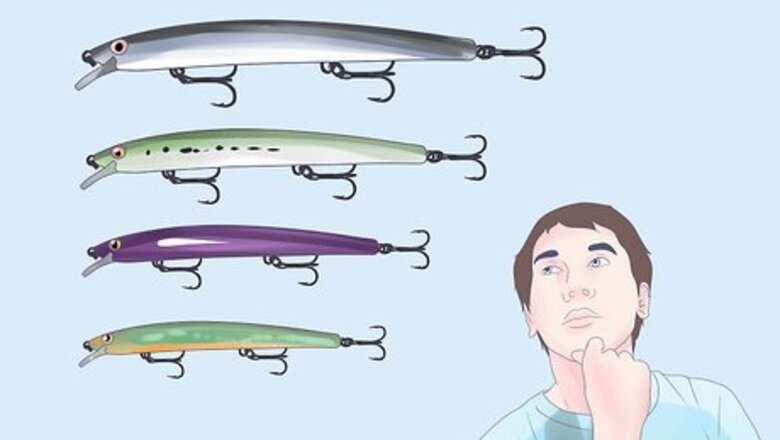
views
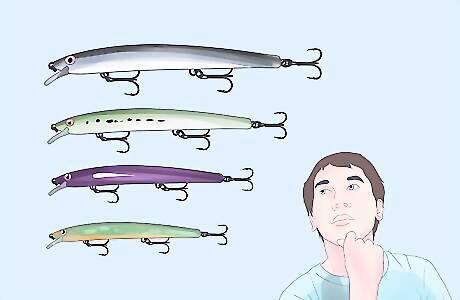
Choose tackle appropriate to the species you're fishing for. Rapalas and other thin minnows can be used to catch a number of different species, so the fish you're fishing for should be your major consideration in choosing which size of Rapala to use and what rod, reel, and line to use with it. Choose smaller-sized thin minnows for bluegill, crappie, and smaller species of bass and trout. Fish them with light to ultralight tackle, using a spinning or spincast reel and lines from 6 to 10-lb. test (3 to 5 kg class). (You may also want to choose smaller thin minnows and lighter line when fishing in clear water.) Choose larger-sized thin minnows for larger fish species, such as largemouth bass, walleye, and pike. You can use a spinning, spincast, or baitcast reel filled with at least 10-lb. test (5 kg class) line or higher. Consider a graphite rod to help you feel the lure's action better as you retrieve, as well as the sinker's contacting the bottom when using the 3-way sinker rig described in a following step.
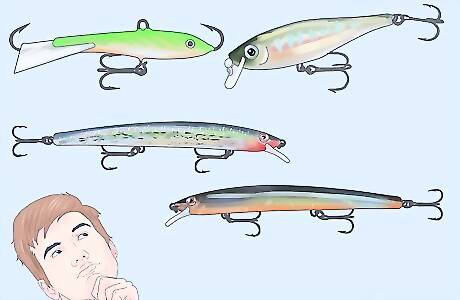
Choose the right lure color. Rapalas are available in a variety of colors and patterns, mimicking various baitfish, as well as simple "dark on top, light on the bottom" patterns. Which type you select depends on which color you have the most confidence in. The rule-of-thumb most anglers use is "bright day, clear water, light-colored lure; dark day, cloudy water, dark-colored lure." As with most fishing "rules," there are exceptions. Some fishermen prefer the most fish-like patterns they can find, particularly in clear-water conditions and less natural, but highly visible, patterns in cloudy water Try to fish brightly colored baits in dingy or muddy water and light, subtle colors in clear water. The logic here is that a bass' visibility is hampered by silt, and colors like chartreuse, yellow and orange are easier to see than bone, pumpkinseed and smoke.
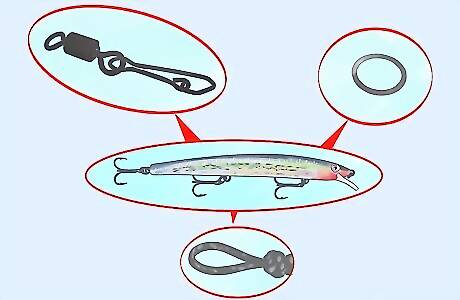
Connect your line to the lure to maximize its action. There are several ways to connect a Rapala to your line: Snap or snap swivel. A snap lets you change lures faster than cutting and retying your line; a rounded snap allows for greater freedom of movement than a pointed one. However, many fishermen dislike using a snap swivel with a Rapala, as the swivel's weight can throw off the lure's wobbling action caused by its slightly concave lip. If you do use a snap or snap swivel, use the smallest you can. Split ring. A split ring is lighter than a snap swivel and allows for freedom of movement, but you'll need to spread it apart with your fingers or special pliers to change lures if you don't want to cut your line and re-tie. Loop knot. Many anglers prefer tying thin minnows onto their lines with a loop knot, as the loop allows for greater freedom of movement and doesn't weight the line like a snap swivel does. You'll have to cut and re-tie the line to change lures, however, and some loop knots will slide next to the eye when a fish strikes the lure. Direct knot. Some fishermen prefer to tie a Rapala to their line with a knot that rests directly against the lure's eye, such as an improved clinch, Palomar, Trilene, or uni-knot.
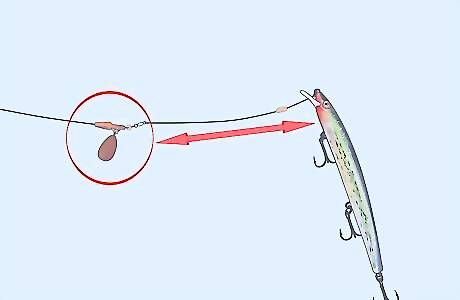
Keep your weight well away from the lure if using a sinker. Just as a large snap swivel will interfere with the Rapala Original Floater's action, putting your sinker too close to the lure will similarly inhibit it. How you fish the Rapala will determine what sinker to use, if any. To fish topwater or in shallow water, you don't need a sinker at all. The Rapala Original Floater is designed to dive to a depth of 2 to 6 feet (0.6 to 1.8 m) on its own. To go deeper when casting into medium depths, you can put a split shot 12 to 24 inches (0.3 to 0.6 m) ahead of your line. (The lighter the line you use, the lighter the split shot you can use to weight your lure.) To cast or troll in deep water, use a three-way swivel rig. Attach one swivel ring to your line and your lure to another swivel ring using 7 feet (2.1 m) of either monofilament or special fluorocarbon leader. Attach 3 feet (0.9 m) of line to the third ring, with a 3-ounce (85 g) bell or dipsey sinker at the other end.
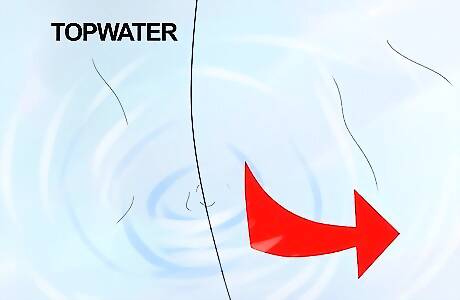
Try various retrieves. Rapala and other thin minnows can be retrieved a number of ways. How you've rigged the lure to your line has some impact on how you can retrieve, but you can try any of the retrieves described below: Fish topwater by casting the lure and letting the ripples dissipate, then twitch the lure to simulate a wounded minnow struggling on the surface. You can also let the lure drift with the current to reach pockets with overhanging limbs that would catch the lure if cast to directly. Crank the Rapala in with a steady retrieve. Use this technique with no sinker or with either of the weighting options described above. Crank the Rapala in for a few seconds, pause briefly, then crank again. Repeat the pauses. This will also simulate a wounded minnow. You can also use this retrieve with or without a sinker. Troll the lure behind your boat at a steady speed. This method is best used with the 3-way sinker rig in deeper water, but you can also troll in shallower water with split shot for weight. Use a speed of about 1 to 2 mph (1.6 to 3.2 km/hour), slower if using a jointed thin minnow.











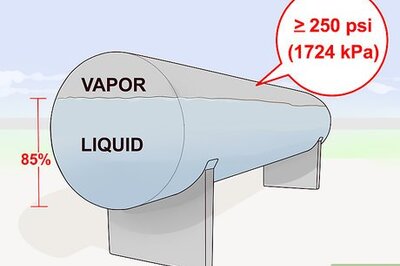








Comments
0 comment